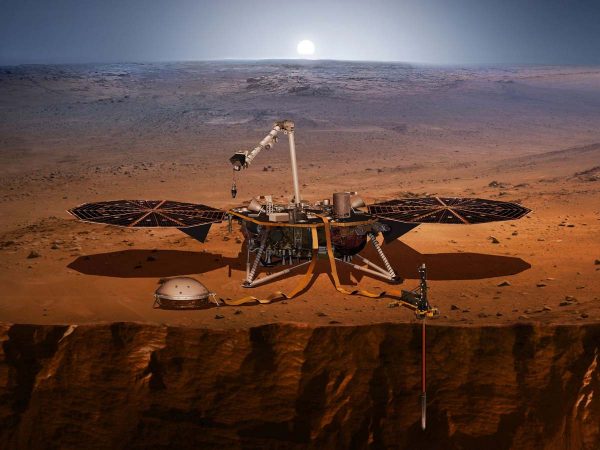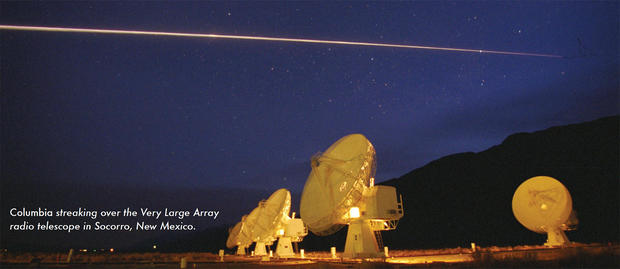Ground teams studying setback with InSight’s subsurface heat probe – Spaceflight Now
Mars continues to surprise us. While digging this weekend the mole backed about halfway out of the ground. Preliminary assessment points to unexpected soil properties as the main reason. Team looking at next steps. #SaveTheMole #Teamwork pic.twitter.com/UURvU8VTwZ
— NASA InSight (@NASAInSight) October 27, 2019
The self-hammering mole on NASA’s InSight lander partially backed out of the ground over the weekend, the latest setback for a German-built science instrument designed to measure heat flowing from the interior of Mars.
“After making progress over the past several weeks digging into the surface of Mars, InSight’s mole has backed about halfway out of its hole this past weekend,” officials from NASA’s Jet Propulsion Laboratory wrote in a statement Sunday. “Preliminary assessments point to unusual soil conditions on the Red Planet. The international mission team is developing the next steps to get it buried again.”
The heat probe has encountered difficulty digging into the Martian soil, and ground teams earlier this year decided to use the InSight lander’s robotic arm to assist the stalled mole.
The Heat Flow and Physical Properties Package, or HP3 instrument, has been unable to dig into Mars since Feb. 28. The device stalled within minutes after beginning to burrow to a planned depth of 16 feet (5 feet) beneath the Martian surface, deeper than any probe has dug into the Red Planet’s crust.
The robotic arm removed a surface support structure covering the heat probe instrument in June, allowing ground teams to assess the mole’s condition. They found a pit had formed around the circumference of the mole, suggesting the Martian soil was not providing enough friction, or resistance, as the self-hammering probe attempted to drive itself into the ground.
Beginning earlier this month, ground controllers at NASA’s Jet Propulsion Laboratory in California commanded the lander’s robotic arm to assist the 1.3-foot (40-centimeter) mole. Teams were using the arm’s scoop to pin the mole against one side of the hole in a bid to apply extra pressure to compensate for the soil at InSight’s landing site, which appears to clump together rather than loosely fall around the mole as it hammers.
Inspections using InSight’s robot arm camera indicated the presence of 2 to 4 inches (5 to 10 centimeters) of duricrust, a type of cemented soil thicker than anything encountered on other Mars missions, according to JPL. The duricrust is also different from the soil the mole was designed for.
The unique soil properties have caused the mole to bounce in place as it recoils from each stroke of its built in hammer mechanism, rather than dig deeper as designed.
“A scoop on the end of the arm has been used in recent weeks to ‘pin’ the mole against the wall of its hole, providing friction it needs to dig,” JPL said in a statement. “The next step is determining how safe it is to move InSight’s robotic arm away from the mole to better assess the situation. The team continues to look at the data and will formulate a plan in the next few days.”

The new technique of using the robot arm to pin the mole against the side of the hole produced promising results before last weekend’s setback.
JPL reported Oct. 17 that the mole had dug about three-quarters of an inch (2 centimeters) since the robotic arm started assisting, the first measurable progress in more than seven months.
Developed by DLR, the German space agency, the HP3 instrument includes the metallic mole and a ribbon-like tether trailing behind it, through the surface support structure, and back to the InSight lander. The umbilical routes power to the instrument, and allows data from temperature sensors on the mole and tether to flow back to the lander for transmission back to Earth.
Mission managers never intended to use InSight’s robotic arm to assist the mole or move the instrument’s support structure, and engineers have carefully planned maneuvers with the arm to reduce the risk of damaging the mole’s sensitive tether umbilical.
Scientists said earlier this year that the HP3 instrument could not be recovered if the mole comes out of its hole. HP3 is one of two geophysics instruments on the InSight lander, which arrived at Mars last November.
A French-built seismometer is working as expected and has already detected multiple marsquakes for the first time.
A third major science investigation on the InSight mission is the Rotation and Interior Structure Experiment, or RISE, which uses radio signals passed between the lander and Earth to measure the wobble of Mars’s rotation, giving scientists an idea of the Red Planet’s core size and density.
The HP3 mole’s partial withdrawal from the clumpy Martian soil may leave ground teams with some hope of saving the instrument, but Thomas Zurbuchen, the head of NASA’s science division, tweeted Sunday that the mole is not required for the $1 billion InSight mission to achieve its minimum criteria for success.
“Remember that, even though the international team will continue to do their best to get this mole into the ground, the mole working is not a so-called Level 1 (requirement) for mission success,” Zurbuchen tweeted.
Email the author.
Follow Stephen Clark on Twitter: @StephenClark1.






